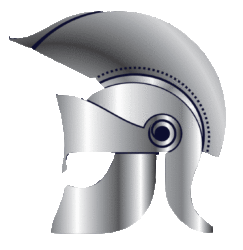Psychotherapy can provide support, education, and guidance to people with PTSD and their families. Treatment can take place one on one or in a group and usually lasts 6 to 12 weeks but can last longer. For example, some people may feel detached from the experience, as though they are observing things rather than experiencing them. A mental health professional who has experience helping people with PTSD, such as a psychiatrist, psychologist, or clinical social worker, can determine whether symptoms meet the criteria for PTSD. Studies report increases in veteran alcohol use after sexual abuse and/or sexual assault endured in combat.

When we synthetically give our brain these endorphins instead of allowing the area of the brain that produces it to do so naturally, we enter a cycle of endorphin depletion and medicate it with alcohol. Blackouts are typically caused by alcohol consumption and a rapid increase in blood alcohol concentration. These temporary losses of memories can occur even though a person under the influence of alcohol can function normally in other ways, such as talking or driving. Not truly a “blackout,” sometimes distressing or traumatic memories can cause a psychogenic nonepileptic seizure.
Getting Help for PTSD and Alcohol Problems
Often, veterans feel that they have to rely on alcohol to cope with the invisible wounds of war. And among veterans, unhealthy habits, like frequent blackout drinking, can have profoundly negative effects across all facets of life. Treatment should always start with education, therapy, and, in regards to alcohol, support programs that address drinking problems in a personally acceptable way.
The ESM study was a measurement burst design with 10 weeks of sampling in 7 bursts across the 1.5 years. Burst 1 was 2 weeks, burst 4 was 3 weeks, and bursts 2, 3, 5, 6 and 7 were 1 week in length. The two longer bursts were included to increase the number of consecutive days for analysis of lagged effects. The bursts were separated by approximately 3 months and research staff contacted participants to schedule the appointments. The experience sampling assessments used here included a self-initiated morning assessment that was to be completed between waking and 10 a.m. Random prompts were followed by a reminder prompt 15 minutes later and then expired after 30 minutes.
Neuroimmune parameters in trauma exposure and PTSD
Because of the underrepresented female sample, we performed post hoc analysis to confirm the consistency of the observed findings. By Steven Schwartz, PhD It is now generally accepted that the “burden of” mental/behavioral health conditions are on par with or surpasses our most… Blacking out happens when you drink enough that your brain stops creating and storing new memories.
One study found that in a large sample of undergraduate college students, 85% reported experiencing a past Criterion A traumatic event, and over the course of two months 21% had experienced another Criterion A trauma (Frazier et al., 2009). While prevalence estimates of PTSD among college students have varied, studies have shown that approximately 6 to 12% of students with a history of trauma have sufficient ptsd alcohol blackout symptoms of PTSD to elicit a diagnosis (Bernat et al., 1998; Frazier et al., 2009). Dysregulation in affect (lability) and behavior (disinhibition) at baseline were hypothesized to be vulnerability factors. In this regard, lability and disinhibition were expected to predict higher initial levels and growth of dependence syndrome symptoms and conduct problems, respectively, over the follow-up period.

